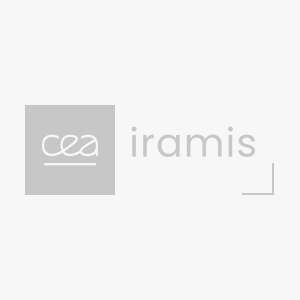Job Description
Résumé / Summary
The internship will involve adapting the H2O2 flash photolysis process for in operando measurement under ionizing radiation. For the proof of concept, it will be necessary to determine the best chemical system and protocol for analyzing the content of H2O2 formed during the radiolysis of water with heavy ions.
The internship will make it possible to adapt the process of flash photolysis of H2O2 to its measurement in operando under ionizing radiation. For the proof of concept, it will be necessary to determine the best chemical system and the protocol to analyze the concentration of H2O2 formed during the radiolysis of water with heavy ions.
Full description
In radiation chemistry, the formation of H2O2 during the radiolysis of water with ion beams (protons, alpha, …) is poorly understood. Indeed, H2O2 can only be analyzed post-mortem, i.e. when the irradiated sample is analyzed in the laboratory a few minutes later. H2O2 is relatively stable, but 1/it disappears by reaction during radiolysis if not protected from hydroxyl radical or hydrated electron attack; 2/it disappears on contact with metal particles, even if present as an impurity. Measurements of H2O2 formation under ionizing particle beams are therefore highly complex and often controversial.
Since H2O2 is easily photolyzed by UVA-B laser excitation to give 2 hydroxyl radicals, we can use the nanosecond flash photolysis technique and the reactivity of species such as Br-, Cl- or even O2 to measure H2O2 concentration over time, while the sample is irradiated (in operando): this constitutes a 3-beam experiment.
The internship will therefore involve using the LIDYL/DICO laser facility dedicated to nanosecond flash photolysis, and testing/comparing different chemical systems to best parameterize an experiment that will ultimately be carried out under a pulsed ion beam. Prior to this, the experiment will be simulated with a deterministic code to take account of the complex process of water radiolysis.
In radiation chemistry, the formation of H2O2 during the radiolysis of water with ion beams (protons, alpha, etc.) is poorly understood. Indeed, the analysis of H2O2 is only done by post-mortem analysis; meaning, when the irradiated sample is analyzed in the laboratory, a few minutes later. H2O2 is relatively stable, but 1/it disappears by reaction during radiolysis if it is not protected from attacks by the hydroxyl radical or the hydrated electron; 2/it disappears on contact with metallic particles/surface, even those present as impurities. Measurements of H2O2 formation under an ionizing particle beam are therefore very complex and often subject to controversy.
As H2O2 has the property of being easily photolyzed with laser excitation in UVA-B giving 2 hydroxyl radicals, we can use the nanosecond flash photolysis technique and the reactivity of species like Br-, Cl- or even O2 to measure the concentration of H2O2 over time, while the sample is being irradiated (in operando): this constitutes a 3-beam experiment.
The internship will therefore consist of using the LIDYL/DICO laser installation dedicated to nanosecond flash photolysis and testing/comparing different chemical systems to best configure an experiment which will ultimately be carried out under a pulsed ion beam. Before that, the experiment will be simulated with a deterministic code in order to take into account the complex process of water radiolysis.
Mots Clés / Keywords
Physico-chemistry, water radiolysis, ultra fast spectroscopy, deterministic simulation
Compétences / Skills
Laser photolysis, flash photolysis
Software
Office
Candidate criteria
Lieu du stage
CEA Saclay, Site de l’Orme des merisiers (91) Essonne, France
Conditions and recommended training
Master 2
Possible thesis continuation
Yes
- Internship duration: 3-6 months
- Level of study: Bac+5
- Training: Master 2
- Continuation in PhD thesis: Yes
- Application deadline: fin février 2025
Langue : Anglais
Méthodes, techniques : Photolyse laser, photolyse éclair
Langages informatiques et logiciels : Office
Links:
- Site web du laboratoire : https://iramis.cea.fr/lidyl/dico/
- Contact : Gérard Baldacchino, responsable du stage
Supervisor
Gérard Baldacchino
Tél. : +33 1 69 08 57 02
Email :


